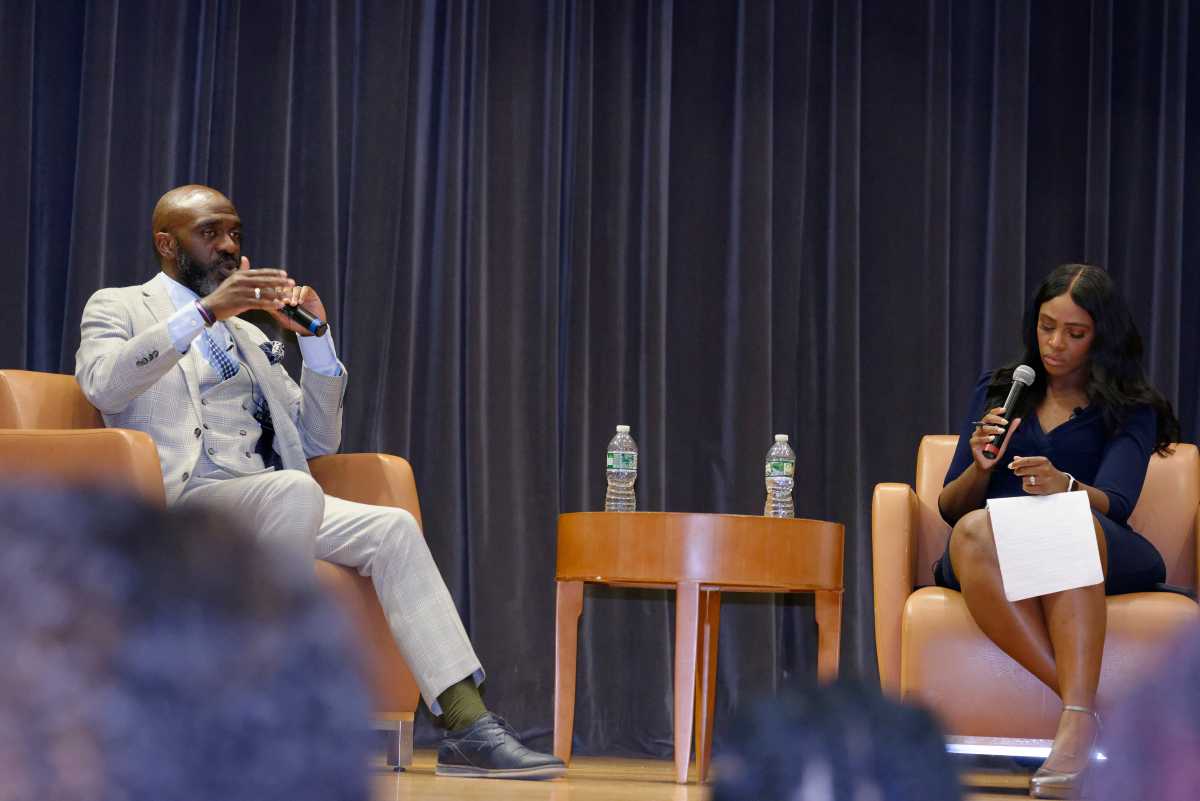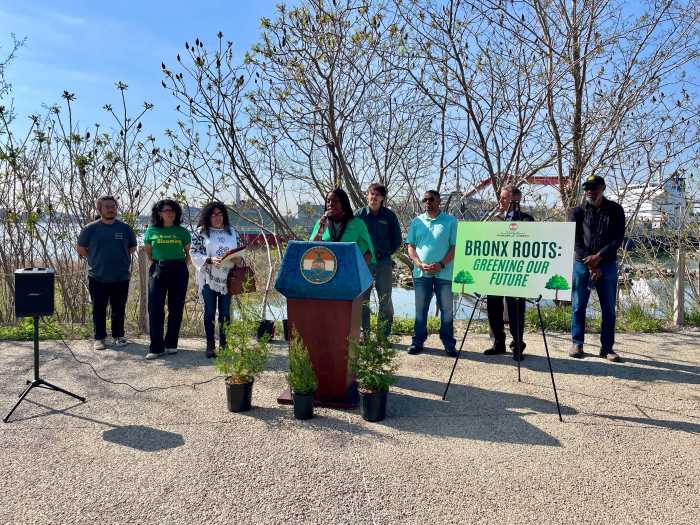
A bill was introduced in the New York City Council Wednesday that aims to get the public more information about NYPD surveillance technologies: X-ray vans, for example, that use a technology developed by the military in Afghanistan to peer into cars or through walls. That technology uses 10 times the radiation of an airport body scanner, according to NYCLU legislative counsel Rashida Richardson.
Or consider the Stingray, a device that acts like a fake cell tower and captures data from cell phones in its range. That device can be the size of a briefcase, says Brennan Center lawyer Michael Price, and is transportable.
Interested in hearing more?
Unfortunately, according to Council members Dan Garodnick and Vanessa Gibson, you can’t, because the City Council has little to no oversight over these and other similar surveillance technologies. That means the public knows little about how the police use them and what data is collected and stored.
Balancing investigative capabilities against civil liberties
Concerns about domestic surveillance and the technologies that enable it have received on and off-again attention from civil liberties groups in the post-9/11 era.
In New York City, the tug of war between surveillance and restraint on police activity is often weighted against concerns about terrorism, with law enforcement arguing for unfettered access to technologies and surveillance practices so they can keep you safe.
At a news conference Wednesday, Garodnick acknowledged the need to “strike the right balance” between oversight without undue restriction. The bill requires the NYPD to explain the capabilities of surveillance technologies and release the guidelines for their use.
The bill would not, sponsors say, require operational details, like when or where particular tools were used.
Both council members expressed some openness to working with the NYPD on how to make a bill like this work.
Unfortunately, the NYPD showed no such reasonableness.
At an unrelated news conference, Commissioner James O’Neill said, “This bill would not be helpful to anyone in New York City.”
His deputy commissioner for legal affairs, Larry Byrne, went even further, saying the bill would make information on how the NYPD prevents terror attacks available even to writers for Inspire Magazine, the al-Qaeda publication.
“I know of no police department or law enforcement organization or military unit in the United States that has this type of requirement imposed on them by law,” Byrne claimed.
That’s simply not true.
The bill codifies suggestions from former President Barack Obama’s task force on 21st century policing. Localities from San Francisco to Santa Clara and Seattle already have embraced similar legislation governing surveillance technology like drones and cameras. New York City’s version does not specify a particular technology, but advocates say this prevents legislatures from having to play catch up when new technologies are unveiled.
At the core of the Garodnick/Gibson bill is the idea that citizens and their representatives should have input on the way they are policed. Police officers have legitimate reasons to use certain technologies, but we can expect safeguards within the NYPD to prevent cops from carrying a Stingray to a protest scene, or randomly driving through the city in an X-ray van.
The police rarely like restrictions from the legislature — as when then-Commissioner Bill Bratton called sensible low-level summons reform from the City Council “crazy” (that’s now law). See also the department’s continued opposition to the Right To Know Act, which would codify processes for officers to identify themselves and conduct legal searches.
Generally, their perspective is: trust us.
There’s good reason to want oversight of the police
On surveillance, that’s a particularly difficult argument to make given the department’s recent history. It was only an Associated Press investigation that uncovered the aggressive reconnaissance of Muslim communities that took place in the NY area after 9/11.
That included disruptive acts such as the infiltration of college groups and the mapping of Muslim restaurants, bookstores, and mosques. The “Demographics Unit” responsible for much of the surveillance was found to have generated no leads in terror investigations. The program led to multiple lawsuits from various plaintiffs, one resulting in a judge for the U.S. Court of Appeals for the 3rd Circuit comparing NYPD’s impulses to historic mistakes such as surveillance of African-Americans during the civil rights movement and treatment of Japanese-Americans during World War II.
In NYC, it’s clear that overreach was wrong and didn’t end being helpful. Cooperation as much as possible with the City Council — and the public — would help ensure no overreaching with vans and cameras and cell phones.































